I lived with LG's pricey Easel TV for a week – I'm convinced the G3 OLED is the better buy
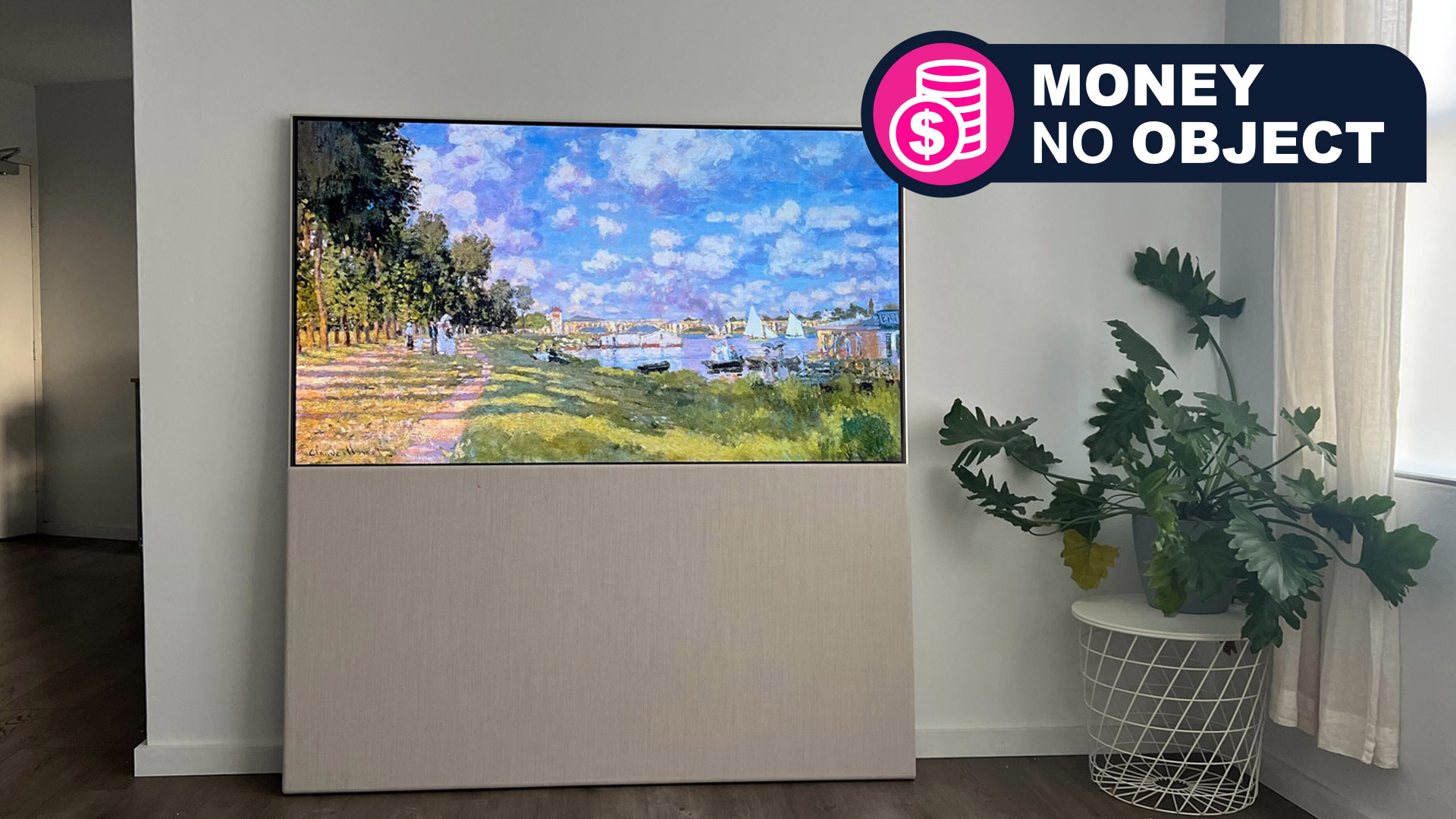
We love to give practical buying advice about the latest gadgets here on TechRadar. But sometimes what we love more is to indulge in the most ridiculous, high-end, cutting-edge, luxurious tech on the planet. That's what we bring you in these Money no object columns – you can read the whole series here.
The more you spend on a TV, the better home cinema experience you’ll get, right? Each year the major TV manufacturers launch their TV lineups, demonstrating the very latest in technologies. These have included the advent of Dolby Vision, High Dynamic Range (HDR) and Micro Lens Array (MLA). They also attempt to introduce new designs to make their black slabs look as least like an eyesore as possible.
But in recent years we’ve seen select brands stray from the conventional path of said black slabs and venture into producing more lifestyle-oriented screens for those who fancy themselves the new replacement for Queer Eye's Bobby Berk.
That can certainly be said of LG’s Objet Easel TV. Launched in 2022, it’s unlike any TV I’ve seen before. Designed to moonlight as a piece of art – hence the Easel nomenclature – as well as being a highly capable OLED TV, it could (on paper) be the perfect screen for any living space.
I’ve been using the LG Objet Easel OLED TV for the last couple of weeks, where it has replaced the company's excellent flagship the LG G3 OLED as the focal point in my main room. But, despite the Objet Easel’s good looks, and its status as a real party piece (more on that later), I can’t wait for the G3 OLED to reclaim its space.
Perfectly imperfect
The main reason anyone is going to buy the LG Objet Easel is for how it looks. This isn’t a TV you place on top of an entertainment unit to gather around. Instead, it’s its own piece of furniture. The 65-inch screen (it’s only available in one size) is mounted within an aluminum frame that’s technically a rectangle, but I’m going to call it slightly off-square. The frame leans against the wall like an easel and thanks to its heft, you needn’t fret about it falling down, although LG does state the lean angle should be no greater than five inches.
I can’t vouch for the TV’s ability to withstand a cat or small dog investigating behind it, but for the most part, you’ll be fine. You are able to wall mount it instead, if you wish.

The other half of the frame is home to a fabric panel designed in collaboration with Danish textile firm Kvadrat (which also collaborated with Bang & Olufsen on the Beosound A5). This fabric panel is the source of the aforementioned party piece. When you turn the Objet Easel on, the panel – which is attached to two motorized tracks integrated into the frame – moves down to reveal the screen.
Sign up for breaking news, reviews, opinion, top tech deals, and more.
When you turn it off, the reverse happens and the panel raises to cover the screen – I liken it to tucking itself into bed – leaving a small section visible at the top, which LG calls Line View. With Line View active, you can see at-a-glance information such as the date and weather, artwork pieces or music being streamed to the TV via Bluetooth or a local server.
After the initial installation, the performance reveal is accompanied by a whimsical melody by default, which thankfully you can turn off. I found it pretty annoying and very gimmicky.
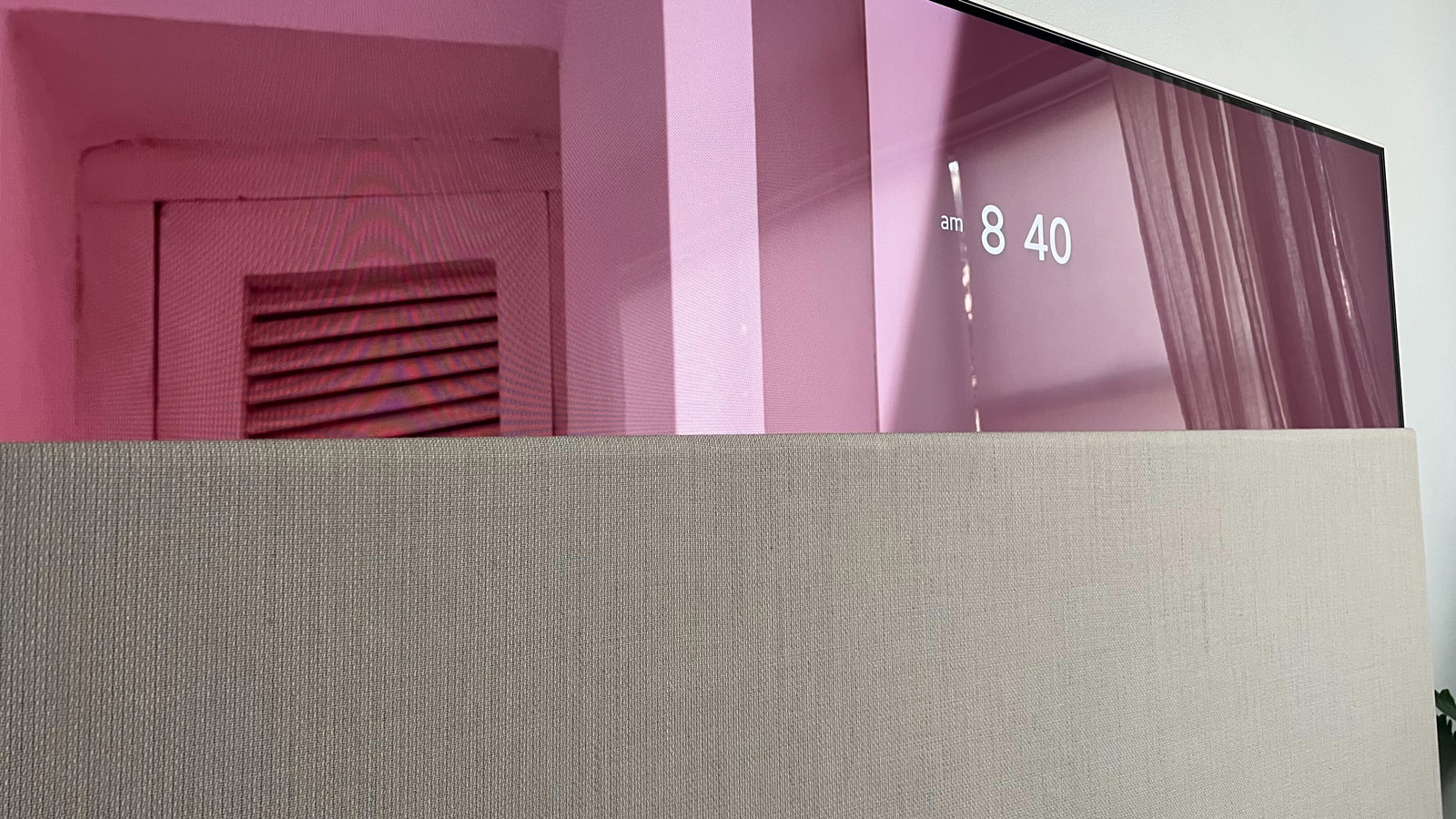
The whole process of either raising or lowering the panel takes about 15 seconds in either direction, so if there’s a TV show you forgot was on and you want to get to it in an instant, that's not going to happen here.
There's no doubt that the LG Objet Easel is a fantastic-looking, albeit unusual, TV. However, that unconventional design does bring with it a few compromises, and that's ultimately why this isn't the TV for me. Firstly, due to its size, the TV panel itself is slightly higher up than the position my G3 OLED adopted on an entertainment unit. I noticed I was having to look up slightly from my seating position which, over time, caused my neck to ache. It’s such a subtle difference in positioning, but one that I definitely noticed (it’s also for this reason that I’ll never understand why some people wall-mount their TVs high above a fireplace).
The leaning frame design also means you can’t freely place anything in front of LG Objet Easel, such as an entertainment unit with one of the best soundbars. This is particularly frustrating, because the audio output from the Objet Easel could use some extra oomph. It’s fitted with an 80W 4.2 channel speaker system, which claims to also reproduce Dolby Atmos soundtracks. But, due to the lack of any dedicated height channels, this is virtual rather than genuinely authentic.
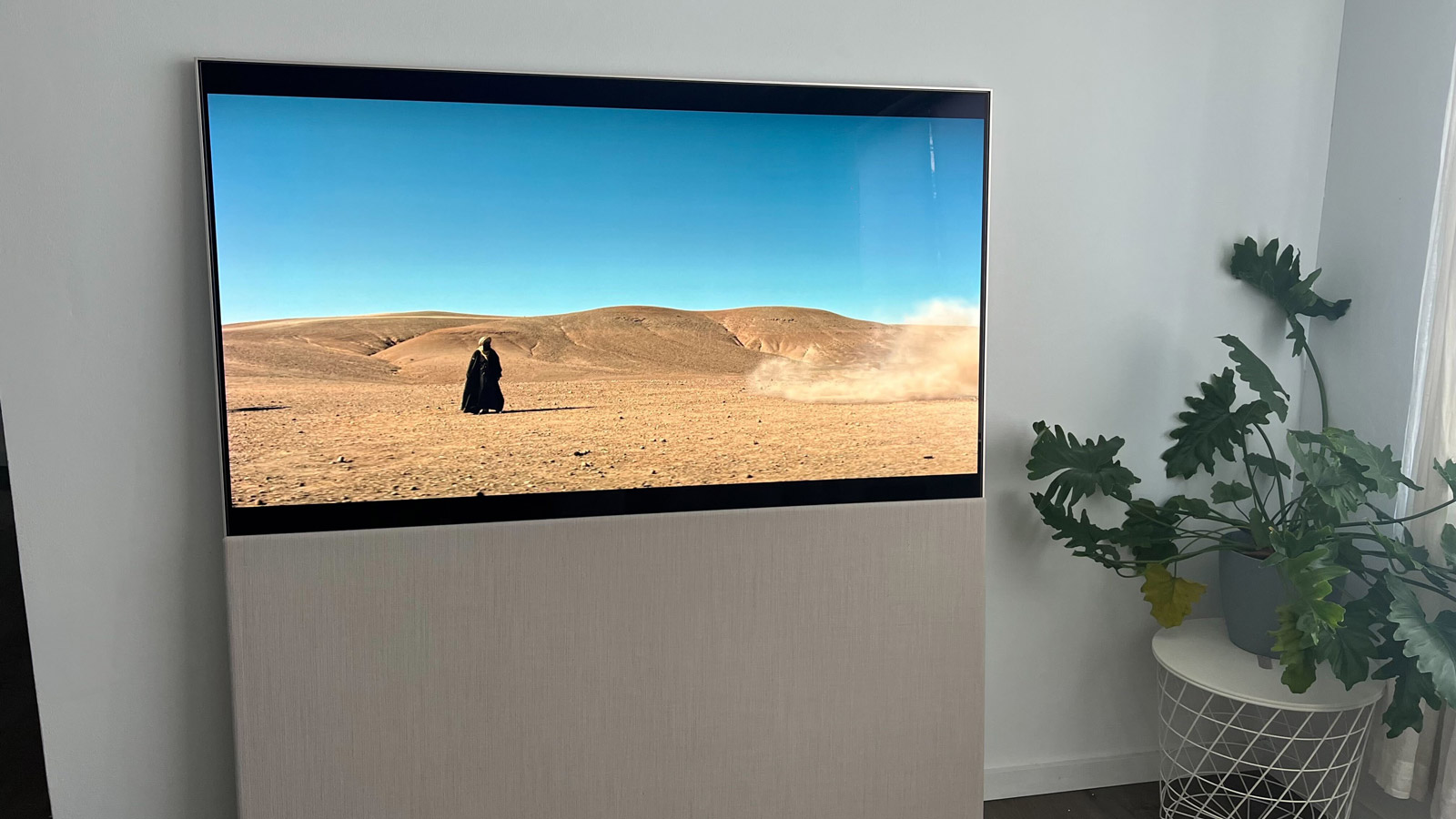
I played a variety of content through the TV, from shows on Disney Plus to music streamed via AirPlay, and received mixed results. Sound when playing Futurama on Disney Plus was perfectly acceptable for casual viewing, but when I switched to the new Star Wars: Ashoka, I found myself having to turn the volume right up to get any sort of excitement. Even then, sounds of lightsabers swooshing and explosions booming lacked any real impact. Music, however, was better handled and while it didn’t quite trouble my Bang & Olufsen Beosound A5 wireless speaker, bass was adequate and vocals came through clearly.
LG does say you can pair the Objet Easel with a soundbar, but I’ve yet to see images of how this would look in practice. If one were to wall-mount it and have it sit flush with the wall, then I can see how a unit could be placed in front (although it would ruin the illusion of it being a piece of art, and cover the moving fabric panel), but for everyone else, it would prove tricky.
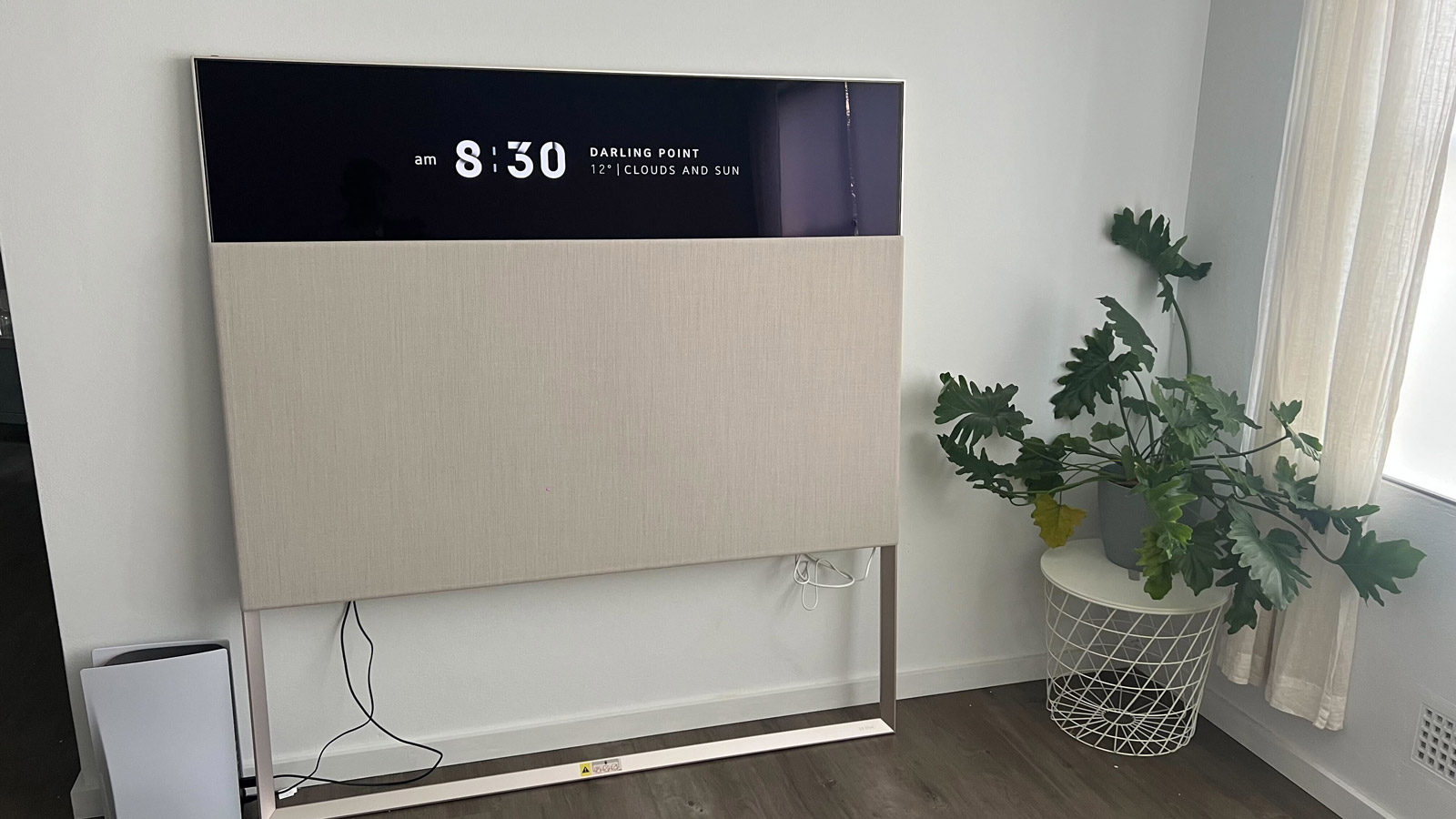
The lack of any unit in front also means you can’t easily keep external devices close by. LG has integrated a shelf along the back of the screen, to help hide cables and smaller devices such as an Apple TV. But my PlayStation 5 had to sit on the floor beside the frame, with its power and HDMI cables on show when the fabric panel was in its raised position. If you have longer HDMI cables, then you could potentially alleviate this with a shelving unit to the side. I would also imagine that those able to afford the Objet Easel would be able to concoct some sort of custom install solution, with cables being fed into the wall behind.
Back to the future
The LG Objet Easel uses one of LG’s 4K Evo OLED panels. LG first announced its Evo technology at CES 2021, before launching it with the G1 OLED. Evo claims to offer superior brightness performance to standard OLED panels due to the use of deuterium, which is an organic material capable of supporting higher voltages for longer, thus being able to produce more light from the OLEDs. We’ve described just how effective this tech is in our LG G2 OLED review and LG C3 review. Sure enough, once again, I can vouch for the brightness offered up when watching content on the TV.
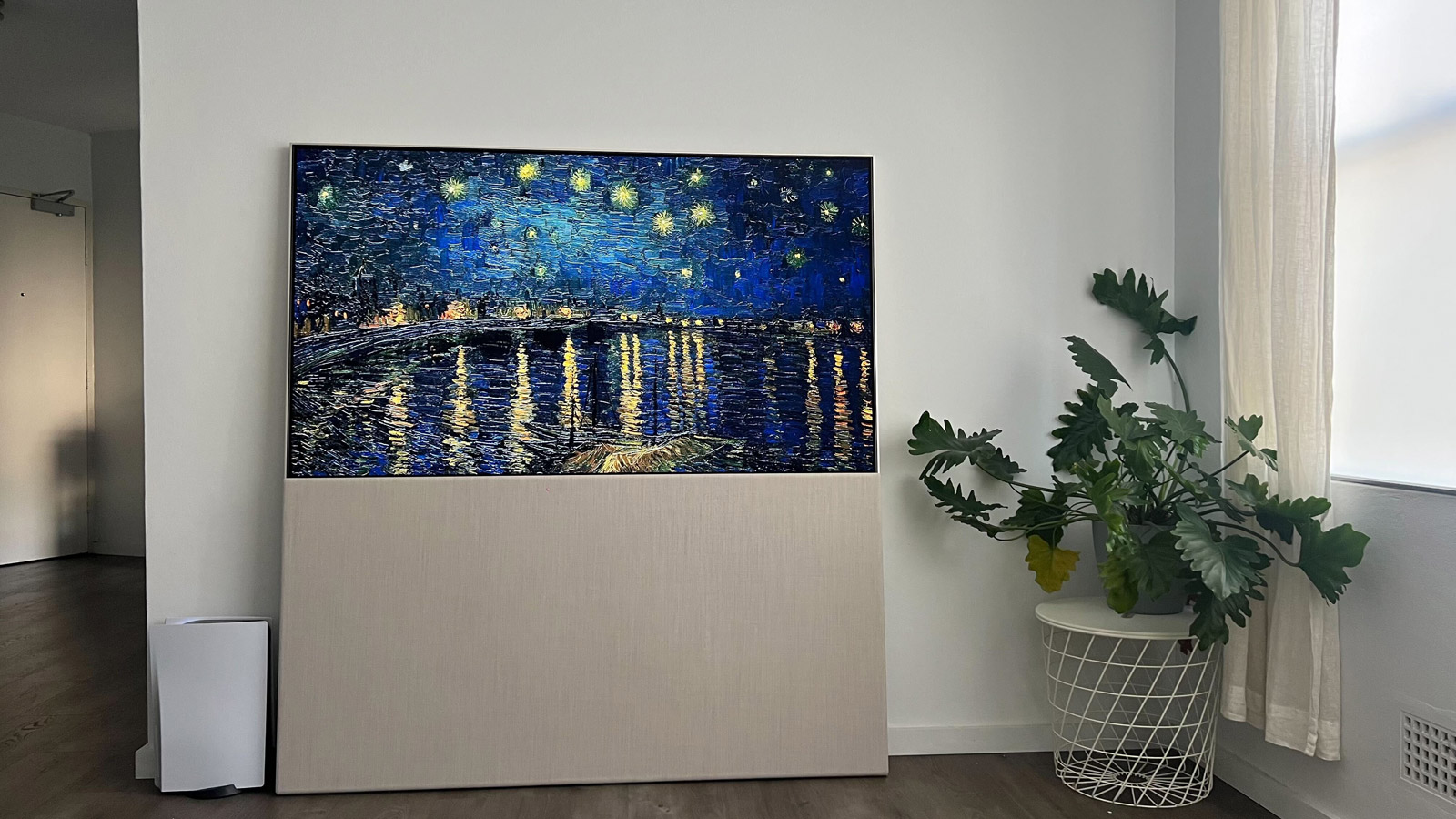
Even in daylight with sun coming through the windows, I was still able to see the screen without too much issue. There was some reflection off the glass, but ultimately, I didn’t miss anything that was happening on screen. The G3 OLED did fare slightly better, offering an even clearer image, which I put down to the inclusion of MLA technology. This sees multiple micro lenses applied on a layer over the OLEDs, which help to better direct the light they emit, resulting in a brighter picture. The Objet Easel doesn’t have this technology.
The Easel also supports Dolby Vision, HDR10 and HLG, has four HDMI 2.1 inputs with support for 4K/120Hz, Dolby Atmos sound processing and the full suite of gaming buzzwords including VRR and ALLM, along with Nvidia GeForce Now. It’s certainly well-specced, then, even for gamers.

LG has fitted the Objet Easel with the Alpha9 Gen 5 AI processor that can also be found in the LG G2 OLED. While the Gen 5 is still a fantastic performer, it has now been replaced by a newer, more impressive version in the Gen 6. But, as LG told me, the Gen 6 wasn't available at the time of the Objet Easel's production. Had it have been, I have no doubt it would have been used.
The visual differences delivered by the two are unlikely to be all that discernible to the average viewer, but the fact is, they’re there.
With the Gen 6 processor, you get improved upscaling of sub-4K content thanks to AI Super Upscaling Pro, and OLED Dynamic Tone Mapping Pro which allows for better HDR optimization by breaking the image on screen down into 20,000 zones, as opposed to 5,000 on the Gen 5.
The Objet Easel also doesn’t get Micro Lens Array technology found in the G3, nor does it get the G3’s heatsink, which further prevents it from being able to shine as bright.
The LG Objet Easel costs £5,999.98 in the UK (£4,000 more than the G3 OLED) and AU$12,999 in Australia (AU$7,700 more than the G3 OLED). Considering the huge difference in price, I have to question where that extra premium is being spent. For a motorized fabric panel?
Like a G3
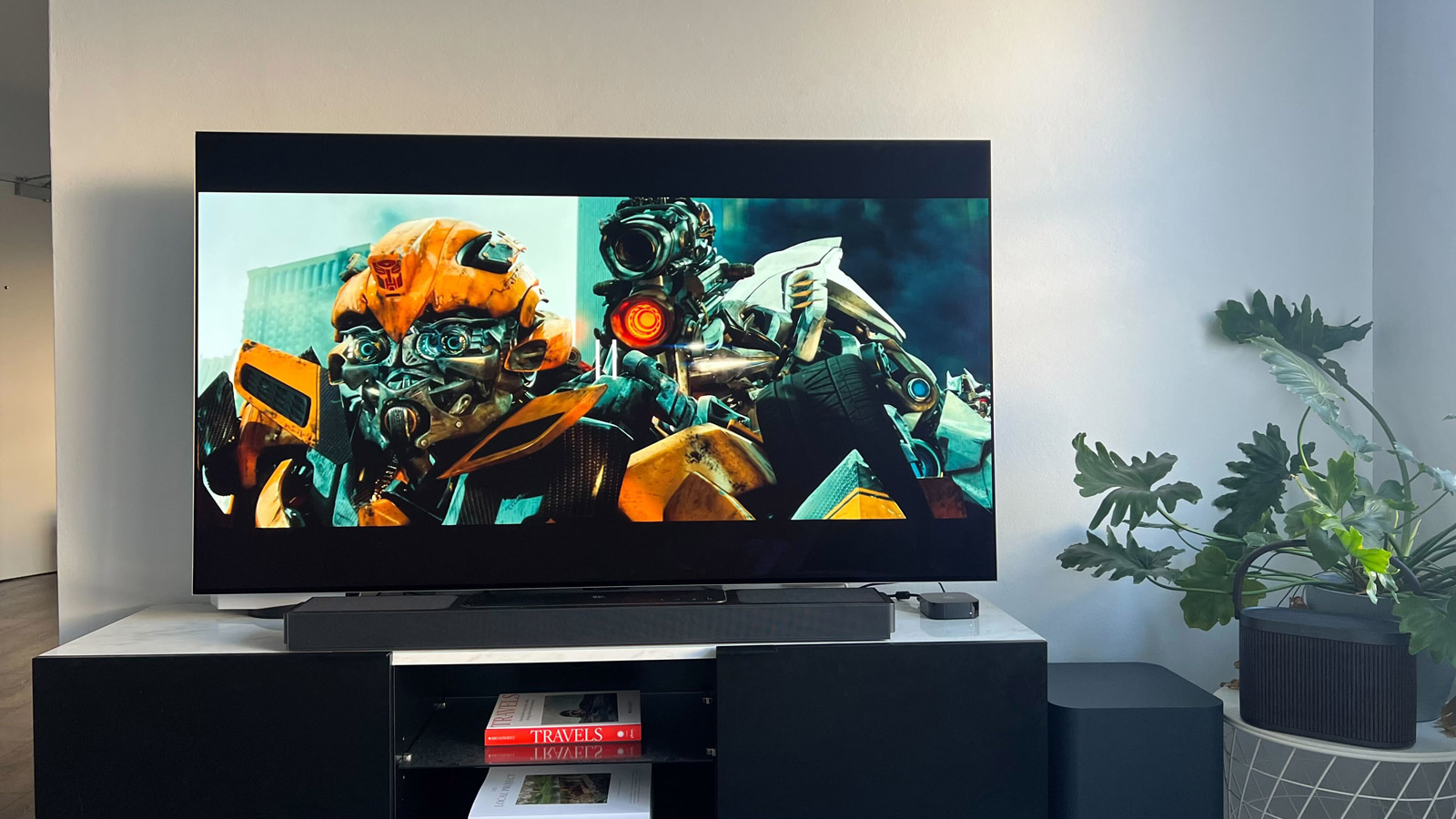
And this is why I’m looking forward to returning the G3 OLED back to its original position in my room. I prefer the positioning of it, the fact it can sit atop a unit that hides away all my external devices, and it’s capable of delivering a more impressive picture. I ultimately think it represents far greater value for money.
I fully appreciate there is an audience for the Objet Easel TV; those who live in houses that could easily moonlight as permanent show homes. There's also no denying that it is damn cool. My housemate was wide-eyed with his jaw to the floor when he first saw it and we both instantly had to share the panel doing it’s thang on our Instagram stories.
But for me – and I'd argue to a greater extent, for the majority of the population – the G3 OLED is the perfect TV, and one that I can’t wait to watch again.

Max is a senior staff writer for TechRadar who covers home entertainment and audio first, NBN second and virtually anything else that falls under the consumer electronics umbrella third. He's also a bit of an ecommerce fiend, particularly when it comes to finding the latest coupon codes for a variety of publications. He has written for TechRadar's sister publication What Hi-Fi? as well as Pocket-lint, and he's also the editor of Australian Hi-Fi and Audio Esoterica magazines. Max also dabbled in the men's lifestyle publication space, but is now firmly rooted in his first passion of technology.